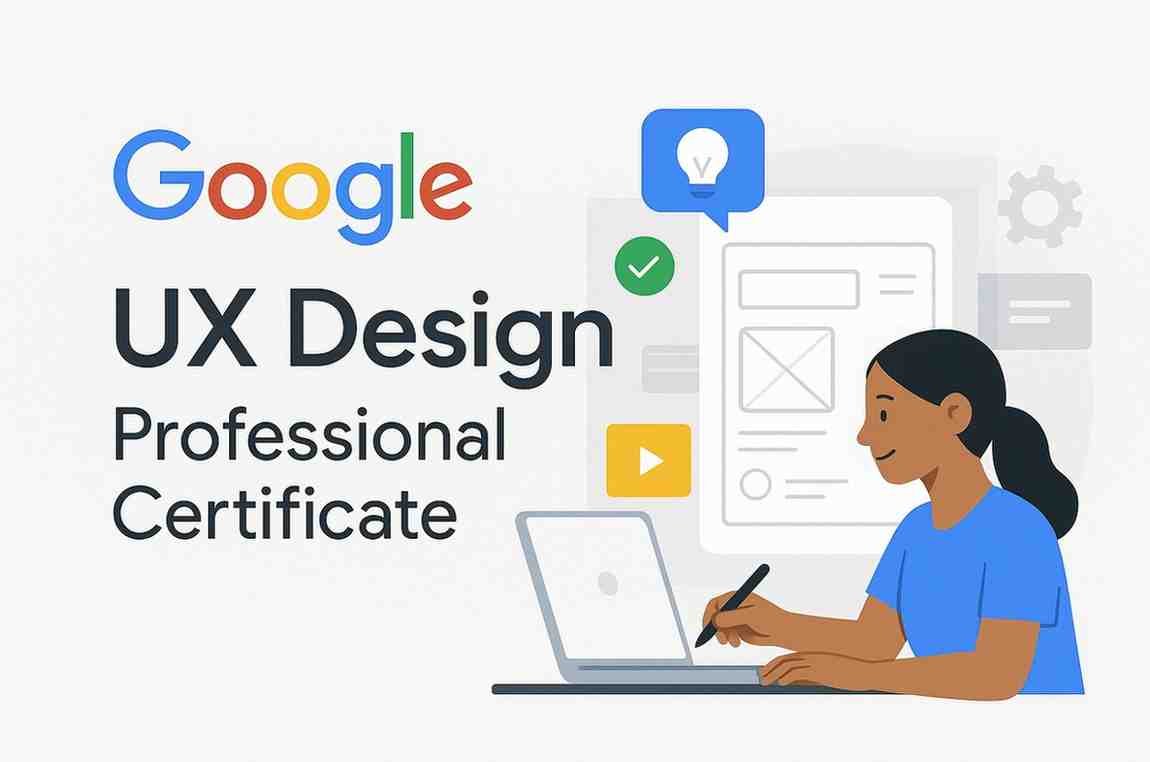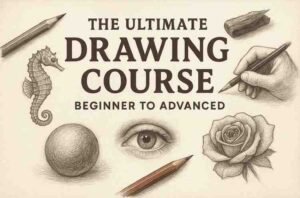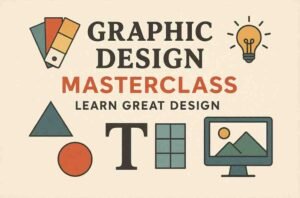Description
The Google UX Design Professional Certificate has become one of the most popular pathways for beginners aspiring to build a career in User Experience (UX) design. Offered through Coursera, this program promises job-ready skills, real-world projects, and Google-backed credibility — all without requiring prior experience or a design background.
But does it truly deliver? Is it worth your time, effort, and money? Here is a comprehensive, analytical, and honest review.
⭐ Overview of the Google UX Design Certificate
-
Platform: Coursera
-
Provider: Google
-
Duration: 4–6 months (flexible, self-paced)
-
Cost: Approx ₹3,000–₹4,000/month (Coursera subscription)
-
Skill Level: Beginner
-
Format: Video lessons, quizzes, hands-on projects, peer reviews
-
Output: 3 complete UX case studies + professional portfolio
This certificate aims to turn absolute beginners into job-ready UX designers by focusing on practical, actionable skills rather than theory-heavy coursework.
🎯 Who Is This Course For?
The program is ideal for:
-
Students entering the design field
-
Working professionals switching careers
-
Marketers, developers, or analysts wanting UX knowledge
-
Freelancers building UX portfolios
-
Entrepreneurs building digital products
If you want a structured, industry-backed, beginner-friendly UX learning journey — this course fits perfectly.
📚 Course Structure: What You Will Learn
The certificate consists of 7 detailed courses, each building upon the previous one:
1. Foundations of UX Design
This course introduces:
-
UX vs UI differences
-
Human-centered design
-
Design thinking process
-
Roles in UX
-
Basic research methods
It lays the right foundation without overwhelming beginners.
2. Start the UX Design Process: Empathize, Define & Ideate
Focuses on understanding users and defining problems:
-
User interviews
-
Personas
-
Empathy maps
-
User journeys
-
Problem statements
-
Brainstorming techniques
Students learn to think like a designer, not just act like one.
3. Build Wireframes & Low-Fidelity Prototypes
This course teaches:
-
Information architecture
-
Sketching wireframes
-
Paper prototypes
-
App screen flows
-
Low-fidelity tools
You start building actual product structures.
4. Conduct UX Research & Test Early Concepts
You learn:
-
Usability testing
-
Research synthesis
-
User feedback interpretation
-
A/B test mindset
-
Iteration cycles
This is where your designs start to evolve.
5. Create High-Fidelity Designs in Figma
A major highlight — full training in Figma, the industry’s #1 design tool.
You’ll learn:
-
UI components
-
Color, typography, spacing
-
Grid systems
-
Interactive design
-
Responsive layouts
This course alone provides immense value.
6. Create Responsive Web Designs in Adobe XD
Although Figma is the star tool, this module adds:
-
Adobe XD workflows
-
Multi-device design
-
Adaptive layouts
-
Web structure fundamentals
It prepares you for modern web design environments.
7. Prepare for Jobs & Build Professional UX Portfolio
This final course helps you:
-
Create 3 UX case studies
-
Build a polished UX portfolio
-
Practice mock interviews
-
Understand UX job roles
-
Learn freelancing basics
The job preparation content is practical and updated.
🧰 Hands-On Projects (The Best Part)
You complete three end-to-end UX projects, such as:
-
A mobile app from scratch
-
A responsive website
-
A cross-platform product
Each includes:
-
User research
-
Wireframes
-
Prototypes
-
Usability tests
-
High-fidelity UI designs
-
Final case study documentation
These case studies are crucial for landing UX jobs.
🎨 Tools You Will Master
-
Figma (main tool)
-
Adobe XD
-
Miro
-
Google Sheets & Docs
-
Trello / Kanban tools
Even with zero experience, you’ll finish the course confident using modern UX design tools.
👨🏫 Teaching Quality & Learning Experience
Google’s instructional design team has done an excellent job.
You get:
-
Clean, high-quality video lessons
-
Real examples from Google designers
-
Easy language, beginner-friendly explanations
-
Assignments that reinforce concepts
-
Frequent checkpoints to test understanding
The course never feels too fast nor too slow — perfect pacing.
🏆 Advantages: Why This Certificate Stands Out
1. No Prior Experience Required
The course is built assuming you know nothing about design — ideal for beginners.
2. Google-Branded Certificate
A certificate from Google adds trust and credibility to your resume.
3. Portfolio-Ready Projects
You finish with three polished case studies, essential for job applications.
4. Industry-Relevant Tools
Figma and XD training prepares you for real-world design positions.
5. Clear Career Path Guidance
Google explains:
-
UX job roles
-
Career ladders
-
Salary expectations
-
Interview preparation strategies
6. Self-Paced & Affordable
The monthly subscription model means you can finish faster and pay less.
⚠️ Limitations: Things You Should Know
1. No Live Mentor Support
You won’t get personalized feedback from instructors — only peer reviews.
2. High Competition
The course is extremely popular, so many job seekers have this same certificate.
3. Limited UI Design Depth
UX is covered thoroughly, but UI/visual design could be deeper.
4. Requires Self-Discipline
Since it’s self-paced, you must stay consistent.
🧭 Career Opportunities After This Certificate
Completing this program prepares you for roles like:
-
UX Designer
-
UI/UX Designer
-
Product Designer (entry-level)
-
UX Research Assistant
-
Interaction Designer
-
UX Analyst
-
Wireframe / Prototype Designer
You can work in:
-
Tech companies
-
Startups
-
Agencies
-
Freelancing marketplaces
-
Product-based companies
📈 Is It Worth It?
👉 Yes — the Google UX Design Certificate is absolutely worth it for beginners.
It gives you:
-
A clear start to UX
-
Practical, portfolio-ready skills
-
Google-level insights
-
Real projects
-
A job-ready learning path
If you stay consistent, build a good portfolio, and practice beyond the course, you can confidently apply for UX internships and entry-level roles.





Reviews
There are no reviews yet.